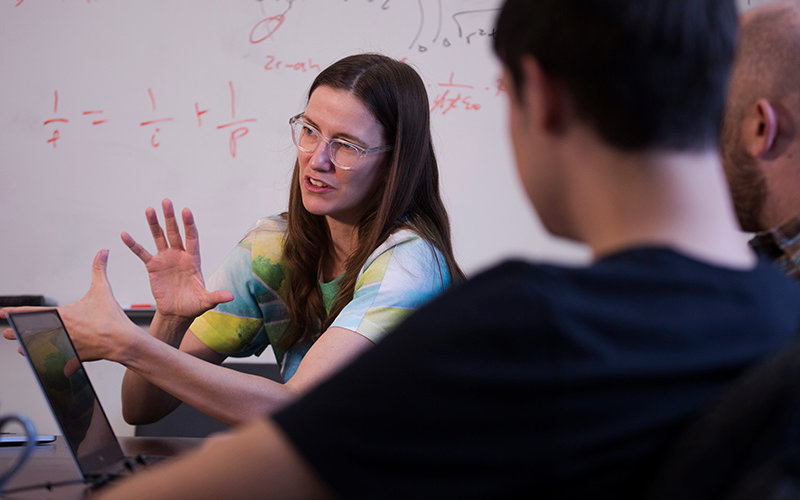
With new National Science Foundation funding, Cal State Fullerton astrophysicist Jocelyn Read and her students are continuing their investigation into what gravitational waves reveal about matter inside extremely dense neutron stars.
For Read’s research efforts, she has been awarded a nearly $205,000 three-year National Science Foundation grant for her project “RUI: Dense Matter and Gravitational Waves: The Coalescence of Neutron Star Binaries.” She has received $65,100 in first-year funding for the project, which begins July 1.
A leading binary neutron-star expert, Read and her students played key roles in Advanced Laser Interferometer Gravitational-Wave Observatory (LIGO) and Virgo’s first discovery of the cosmic merger of neutron stars in 2017.
“Our gravitational-wave measurements are shining new light on the properties of ultra matter, cross-checking neutron star observations from electromagnetic astronomy and informing calculations in nuclear physics,” said Read, assistant professor of physics and associate director of CSUF’s Gravitational-Wave Physics and Astronomy Center.
Through the NSF-funded project, physics students will explore the impact of dense matter on gravitational waves.
“This research introduces them to the science community, sparking future participation in gravitational astrophysics, data science and engineering,” Read added.
Students involved in the project include Eric Flynn who has lead the development of software to incorporate information from computer simulations into gravitational-wave predictions. Flynn, a graduate student, is working with LIGO and Virgo collaborators in Europe to integrate his work with LIGO infrastructure. He also is working on a new paper to describe some of the first results with his code.
Graduate student Amauri Tapia also has joined the project to improve descriptions of nuclear matter in the analysis.
Undergraduate Erick Leon is learning how LIGO measures the properties of gravitational-wave sources. This summer, he is conducting gravitational-wave research at the University of Birmingham, United Kingdom.
Read also leads LIGO’s Extreme Matter group, which explores the role of matter in gravitational waves. She and her collaborators recently co-authored a new paper studying the extremely dense interiors of the neutron stars of the 2017 merger, published in Physical Review Letters. Their work set new limits on the possible size of neutron stars, suggesting they may be more compact than expected, Read said.
Upgrades to the LIGO detectors are in progress, said Read, adding that she and her LIGO Scientific Collaboration colleagues are looking forward to an era where regular observations are used to learn about astrophysical sources.
Read has received numerous other grants for her research, including nearly $1 million from the National Science Foundation to recruit and support underrepresented students in gravitational-wave science.